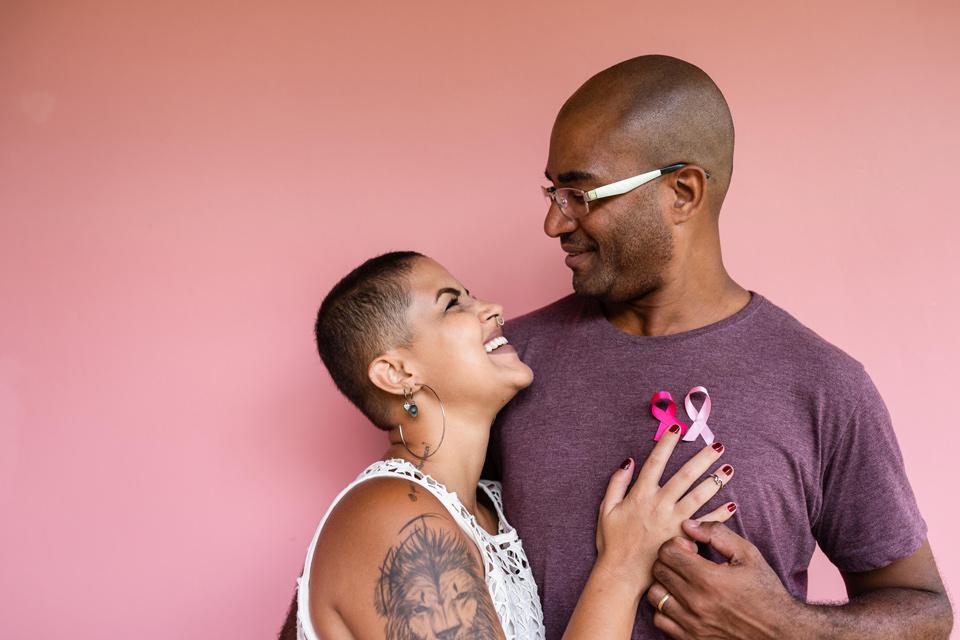October is Breast Cancer Awareness Month, a tradition started in 1985 with the goal of educating the public about breast cancer and celebrating those whose lives have been affected by the disease. While breast cancer is much more common in women, it can affect men too (although the chances are rare). But unfortunately, since men are not as familiar with the signs and symptoms of breast cancer, they’re less likely to catch the disease early, when it’s the most treatable.

Male breast cancer
Like breast cancer in women, breast cancer in men starts at a cellular level, with a disruption in the DNA of new cells. The abnormal growth of these new cells can cause a tumor that’s either benign or cancerous. Types of breast cancer in men include:
- Ductal carcinoma (starts in the milk ducts)
- Lobular carcinoma (starts in the milk-producing glands)
- Paget’s disease (involving the skin of the nipple)
- Inflammatory breast cancer (blockage of certain vessels in the skin of the breast)
Who should get screened?
According to the U.S. Preventive Services Task Force, women who are 50 to 74 years old and are at average risk for breast cancer should get a mammogram every two years. However, women who are 40 to 49 years old should talk to their provider about when to start and how often to get a mammogram.
Mammograms are not recommended for most men unless they’re at high risk. Risk factors can include a BRCA2 or BRCA1 inherited gene mutation, a strong family history of breast cancer, obesity, radiation treatment in the chest area, liver disease, exposure to estrogen, older age, testicle disease and gynecomastia (overdevelopment of the breast tissue). Depending on your level of risk, your provider may suggest regular mammograms or clinical breast exams.
Talk to your provider right away if you notice any of these symptoms:
- A lump in the breast or underarm
- Puckering of the breast
- A change in breast size
- An inverted nipple
- Leakage from the nipple
- Redness/swelling of the breast
Importance of early detection
The earlier breast cancer is detected, the better the chances of survival. In fact, women who detect breast cancer in the earliest stages have a 93 percent or higher chance of survival in the first five years. In general, men have a similar chance of recovery as women, if the cancer is caught at an early stage.
If you wait until you experience symptoms to get a screening exam, the cancer may already be quite advanced. That’s why it’s critically important to get regular mammograms in combination with clinical breast exams and breast self-exams.
Spread the word
Encourage your female family and friends to get regular breast cancer screenings. And if you’re a male experiencing any symptoms, don’t feel embarrassed at all about contacting your doctor. While many breast lumps turn out to be benign, better to be safe than sorry. For answers to your questions or more information about breast cancer, talk to your provider.
